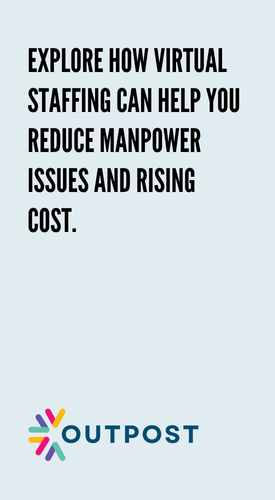If your clinic can’t keep up with calls, you’re already losing patients.
They won’t always complain. They’ll just stop booking. And once that trust is gone, it’s hard to win back.
That’s why more clinics are turning to a virtual medical receptionist in Singapore—someone trained to handle admin, bookings, and front desk tasks without being physically present. For many, it’s no longer a backup plan. The virtual medical receptionist Singapore has to offer is becoming the go-to for leaner, more reliable support.
This guide walks you through exactly how to hire and onboard the right person—so they’re not just answering calls, but keeping your clinic running smoothly from day one.
Step 1: Figure Out What You Need Help With
Before you look for someone, you need to know what you’re asking them to do.
Don’t just say “admin tasks.” Break it down. Think about what’s actually slowing you down right now.
Most clinics hire a virtual medical receptionist for:
- Answering incoming calls
- Confirming or rescheduling appointments
- Replying to WhatsApp or SMS messages
- Supporting telehealth patient check-ins
- Following up on no-shows
- Updating patient information inside the EHR
Keep the list focused. You’re not looking to outsource the entire clinic operation. You’re buying back time and fixing the gaps that are currently dragging your team.
Step 2: Decide How You’ll Hire
You’ve got two main routes: go through a provider, or hire directly.
Option A: Use a Managed Support Provider
Providers like Outpost help clinics hire a virtual medical receptionist who’s already trained in healthcare admin. You don’t need to sort through dozens of CVs or figure out contracts—they handle that.
This works well if:
- You want someone in place quickly
- You prefer flat monthly pricing
- You’d rather avoid the HR headaches
Option B: Hire Your Own
If you have time and prefer to build your own team, you can post the role on platforms like JobStreet, Upwork, or freelance job boards.
Just keep in mind—you’ll need to handle screening, contracts, onboarding, and long-term management yourself.
Whichever route you choose, make sure the person has real clinic exposure. General VA experience isn’t enough. That’s one of the biggest considerations before hiring someone for a healthcare-facing role.
Step 3: Ask the Right Questions When Screening
Once you start reviewing candidates, don’t just focus on how they sound in interviews. Dig into how they think and how they’d work in your clinic.
Ask things like:
- Have you worked with medical teams before?
- What booking or calendar systems have you used?
- How would you handle a call from a late patient who missed their appointment?
- How do you make sure nothing slips through when you’re managing a high message volume?
If you’re working with a service like Outpost, you can often request someone who has prior experience with tools like Cliniko, Plato, or other booking platforms. That saves you time during setup.
Step 4: Get Your Systems Ready Before They Start
The best receptionist in the world can’t do much if you’re not ready to let them work.
Make sure you’ve already set up:
- VoIP or call routing (so they can handle calls like they’re in the clinic)
- Shared calendars or booking platforms
- Limited access to your EHR (view or update as needed)
- A password manager (LastPass works well)
- A central folder with scripts, templates, and contact lists
This is also where your internal documentation starts to matter. It doesn’t have to be pretty. Just make it easy to find what they need—because getting stuck is what slows things down.
Step 5: Create a Simple Onboarding Plan
You don’t need a fancy manual. You just need to walk them through how your clinic actually works.
Here’s a 3-day structure that works:
Day 1: Welcome and Setup
- Introduce them to the team
- Walk through your clinic’s flow
- Share your daily expectations
- Confirm access to tools and platforms
Day 2: Observation and Light Tasks
- Let them observe a few patient calls (if recordings are allowed)
- Walk through some common scenarios
- Have them draft replies to real messages or reschedule test bookings
- Let them try updating patient files with non-sensitive data
Day 3: Supervised Execution
- Let them take on simple tasks with live guidance
- Start building their workflow
- Show them how to escalate anything urgent
- Provide honest, real-time feedback
And don’t forget to cover the local side of things. This is where training for local healthcare comes in. Singapore patients expect quick replies, clear updates, and familiarity with things like MediSave, CHAS, or specialist referrals. The receptionist doesn’t need to know it all, but they should sound like they belong here.

Step 6: Keep the Feedback Flowing
Hiring is the easy part. Making it work takes ongoing communication.
Don’t wait for problems. Build in feedback early.
- Do a short debrief after their first few real calls
- Check in weekly—10 minutes is enough
- Use a shared Google Doc for phrases to avoid, patient notes, or task reminders
- Encourage them to speak up if something’s unclear
Step 7: Know What Good Looks Like
Track real-world results. Don’t rely on how “busy” they seem.
Metrics worth watching:
- Response times (for calls and messages)
- Appointment confirmation rates
- No-show follow-up recovery
- Booking accuracy
- Internal team feedback
You don’t need spreadsheets. Just keep your eye on what actually moves the needle for your clinic.
And compare that to how things worked before. If your in-person receptionist was managing three things at once and making errors, even moderate improvement from a virtual setup could be a win.
Conclusion

A virtual medical receptionist isn’t a shortcut—it’s a shift. But hiring isn’t the end goal. Training, structure, and clarity are what turn a remote hire into someone who works like they’ve been part of your clinic all along.
So take your time setting it up. Be clear. Stay involved. Because the right receptionist doesn’t just pick up calls—they protect the experience you’ve worked hard to build.




